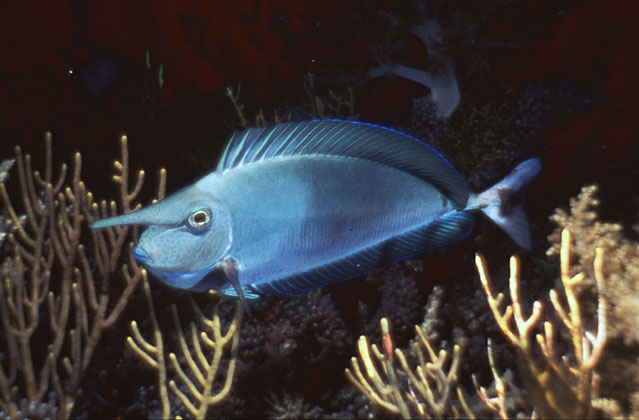| Acanthuridae (Surgeonfishes, tangs, unicornfishes), subfamily: Nasinae |
| 100 cm TL (male/unsexed); max. reported age: 23 years |
|
reef-associated; marine; depth range 1 - 60 m |
| Indo-Pacific: East Africa, including the Mascarene Islands (Ref. 37792) to the Hawaiian, Marquesan, and Tuamoto islands, north to southern Japan, south to Lord Howe Island. |
|
Dorsal spines (total): 5-5; Dorsal soft rays (total): 28-29; Anal spines: 2-2; Anal soft rays: 27-28. Plain brown or olivaceous in color, paler below; subadults with black caudal rays, narrow margins and white caudal filaments; pectoral fins with white distal margins (Ref. 3145).
Description: Characterized further by adults having long, tapering horn on forehead; pair of bony plates on caudal peduncle that develop knife-like keels in adults; juveniles and subadult with white ring around caudal peduncle (Ref. 90102). |
| Juveniles occur in clear, shallow lagoon reefs at depths as little as 1 m; adults rarely seen in less than 25 m, encountered off outer reef drop-offs in small schools (Ref. 30573, 48637). Benthopelagic (Ref. 58302). Feeds on large zooplankton during the day and shelter within the reef during the night; also benthic algae (Ref. 30573, 48637). |
|
Least Concern (LC); Date assessed: 04 May 2010 Ref. (130435)
|
| reports of ciguatera poisoning |
Source and more info: www.fishbase.org. For personal, classroom, and other internal use only. Not for publication.
